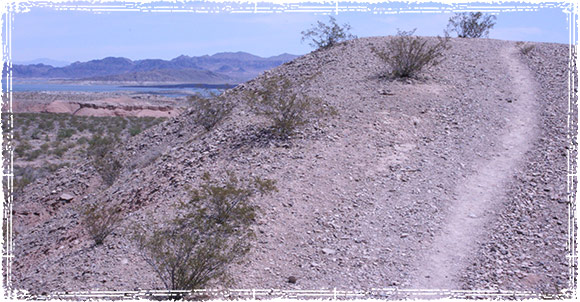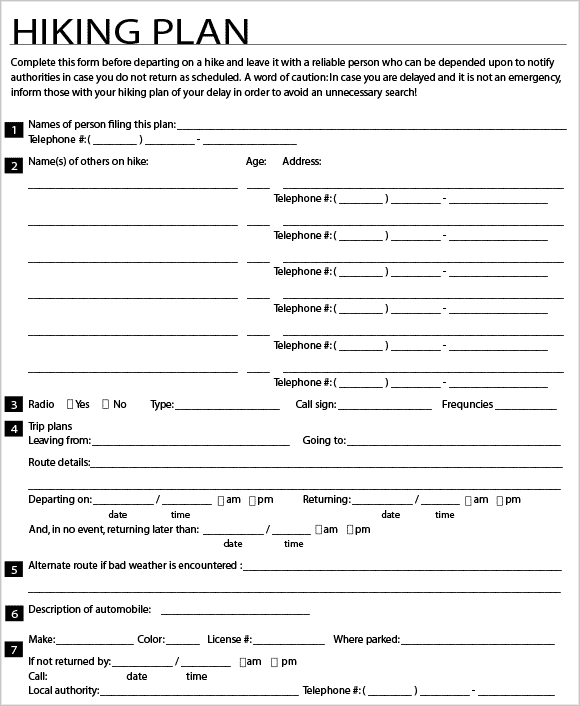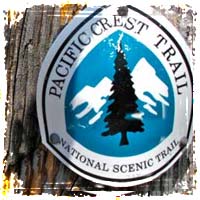
Most Hikers get into trouble for one reason; they fail to adequately prepare themselves for their adventure. Ask anyone who does search and rescue for a living, and they will tell you that 9 times out of 10, most rescues could have been prevented with just a little bit of pre-planning and preparation.
When you are planning a hike, even a short day hike, preparation is the key to staying safe.
Leave a Detailed Trail Plan with a Family Member or Friend
One of the best ways you can prevent becoming another statistic is by telling someone where you’re going and when you expect to return home. Should something happen, and you fail to return home at the agreed upon time, that person should immediately call the local search and rescue team to notify them of where you were hiking.
Your Plan Should look something like this:

A printable version can be downloaded here…
Leave a Detailed Trail Plan in your Vehicle
One of the first places Search and Rescue teams often search is the vehicle you left at the trailhead. Often, concerned hikers will report a vehicle that’s been left abandoned for a long period of time. It’s a good idea to leave an extra copy of your plan in the vehicle so search and rescue teams know exactly where they should be looking and who they are looking for.
Your plan should include:
- Your Departure Date & Time
- Your Expected Return Date & Time
- Your Starting Point
- Your Destination
- Your Intended Travel Route
- Any Alternate Plans that you may have
- Any communications gear you have including phone numbers or frequencies that you use.
- And Any Medical Conditions you have.
Study Your Trail

Before ever stepping foot on the trail, you should have a pretty good idea of what that trail looks like, and what’s physically required to successfully complete the hike. Most trails are rated, and can be found by searching numerous online hiking databases.
You should also have a Topo map, and know how to use it. These maps can give you a wealth of knowledge including terrain, difficulties, waterways, vegetation and alternative routes.
Dress for Success
Don’t underestimate the importance of your clothing. Make sure you select clothing that is based on your environment and the weather you expect to encounter.
In a survival situation the clothes on your back, combined with what’s in your bag, will be your primary source of shelter and protection. Clothing is your first line of defense against the elements and is something that should never be overlooked.
If you become lost, stay calm and stay put

If you become lost: stop, relax and analyze your situation. If you believe you can make your way back to an identifiable location then do so. However, it you cannot find your way back to the right trail, immediately stop hiking to prevent wandering further away on an unknown path.
If you have a radio or a cell phone, now is the time to try to call search and rescue. If you can’t get a hold of anyone, staying put and relying on your original rescue plan is probably going to be your best option.
95% of all survival rescues take place in the first 72 hours of any survival situation. If you’re Lost, Staying Put and Staying Calm will maximize your chances of survival. The best thing you can do is remember that rescue is probably on the way, and then make yourself as visible as possible to the search and rescue teams.
Cell Phones: Unless you’re going far into the backcountry, a cell phone is still an extremely useful tool for signaling for help. Over 75% of all Search and Rescue calls involve someone using a cell phone to call for rescue. If you regularly venture into areas where your normal cell phone is out of range, you should consider purchasing a satellite phone. When your fancy iPhone is out of range, something like the SPOT Global Phone will allow you to make calls in even the most remote parts of the world.
Ham Radio: In most areas of the country, I can usually hit some sort of repeater with my 2 meter Radio. If you frequently hike out in the backcountry, you may want to consider becoming a licensed ham radio operator.



Personal Locator Beacons: If you frequently venture out into the backcountry, you should consider purchasing a Personal Location Beacon or a SPOT device that can be activated in an emergency. These devices will relay your position to a worldwide network of search and rescue satellites that will immediately notify search and rescue teams that you are in danger and where you are located.
You should also consider carrying the following signaling devices:
- Flashlights
- Reflective materials (an emergency blanket is a great dual purpose signaling device)
- A small signaling mirror
- An Emergency Whistle, which can be used to alert nearby search teams to your location.




There are also web sites to review before you go.
They test and advocate personal gear and locator’s as well. Equipped.com is one such site written by Doug Ritter. Hope it helps you get away from it all and stay safe.
i always let someone know when i go on a solo hike. and i take a camelbak full of water and enough supplies to survive a night out.
Leave your iPod at home…
I highly suggest taking a course if you’re not familiar with reading maps. A topographical map and a compass can get you out of most situations.
I couldn’t agree more, this has come in handy for me out on the AT more than once!
That’s a serious hiking plan. But I think it’s a good idea. Knowing land navigation is a must have skill as is reading maps. It many cases, people can avoid getting lost by not leaving the trail and looking at a trail map before hand, or better yet bringing a trail map.
Great stuff – I REALLY like the plan and the notification info
Include in your study of the trail interviews with people who’ve done that particular trail. Their account of their hike will give some kind of perspective.
All good info. I add be prepared for bad weather with at least a cheap, lightweight poncho, and above all, keep your mind clear by drinking water and resting as needed.
A small accident can become life threatening when things get bad.
Some of us prefer hiking off of the beaten paths or pre used trails. Compass, several layers of clothingfor varying weather conditions some on you & some in the vehicle for after the hike,a fullish stomach in you& lightweight food that doesnt attract predators on you, lighter, tp, mosquito frequency or chemical mosquito repellant, & walkie talkies if in a group where cell phones have no reception…compass, magnifyer, ultrasonic mosquito repellant, flashlight, are all handy apps to have on a celphone but if you bring it be sure to have it ziplocked in a watertight bag & extra battery or charger to replace energy all the apps suck out of phone battery in hours whereas older phones with less apps could last days or weeks. Dressing in layers also somewhat protects against ticks & other insect bites. A pager attatched to a DCcar or AC charger with inverter could be a gr8 invention for all those people who lose cellphones hiking like others lose remotes in couches …
& if bound to hike 500ft or more off of known tails, bring a lengthy lightweight ball of colored rope to anchor on the vehicle or tree nearest trail exit & unravel as you go to be able to re-ravel it out instead of getting lost…some forests easy to do that in & are littered by plastic ribbons previous hikers used to mark their way
Hi kids!! I am that search and rescue person that comes to get you. This is excellent information!! Please, please fill out this kind of form and leave it with a friend and with your car. We often communicate with the victim by cell phone, sometimes text works when a call won’t. We’ve done third party info, lost person texting friend who then contacted us. I’m in the mountains of NC and I can promise you the 80 degree day becomes the 40 degree night with rain often. It’s safest to assume and prepare for getting lost, with clothes, food, and water. Also remember to turn your phone off till you need it, so there will be battery!
Great stuff at your site !! I might suggest you all get a copy of the Boy Scout manual. As a Scout Master we teach our boys to always carry the “ten essentials” when they go into the woods:
Compass/map
full water bottle
flashlight
trail snacks
light rain gear
pocket knife
bug spray
sun block
basic 1st aid kit
fire starter
If you carry and know how to use these things, you will always come out in one piece !!
It happens all the time, in the news, people go out in the wild by themselves not thinking something could happen with no phone no may to contact anyone. The only thing they have to do is just tell someone where you going and how to find you. How easy is that.
Would also recommend taking magnesium fire lighting equipment. Fire is as important as water, 1. Can serve as a beacon. 2. Will keep you warm and dry.3. Providing you have a container will sterilise water for drinking.
great advice for day hikers, but a true off-gridder/survivalist is already prepared to survive in all weather conditions and speaking for myself I’d rather walk until I reach the edge of the earth than call the ‘authorities’ for help with anything… (they can go screw!)
shut up
Just as the three most important things for a successful business is ” Location, Location, Location” the three most important things if lost is “Don’t Panic, Don’t Panic, Don’t Panic” easier said than done. But you must control your panic and nothing helps more than to have some kind of light source and a method to build a fire. Always atleast have your “Bic” and even a key chain light will be better than nothing. Trekker Out.